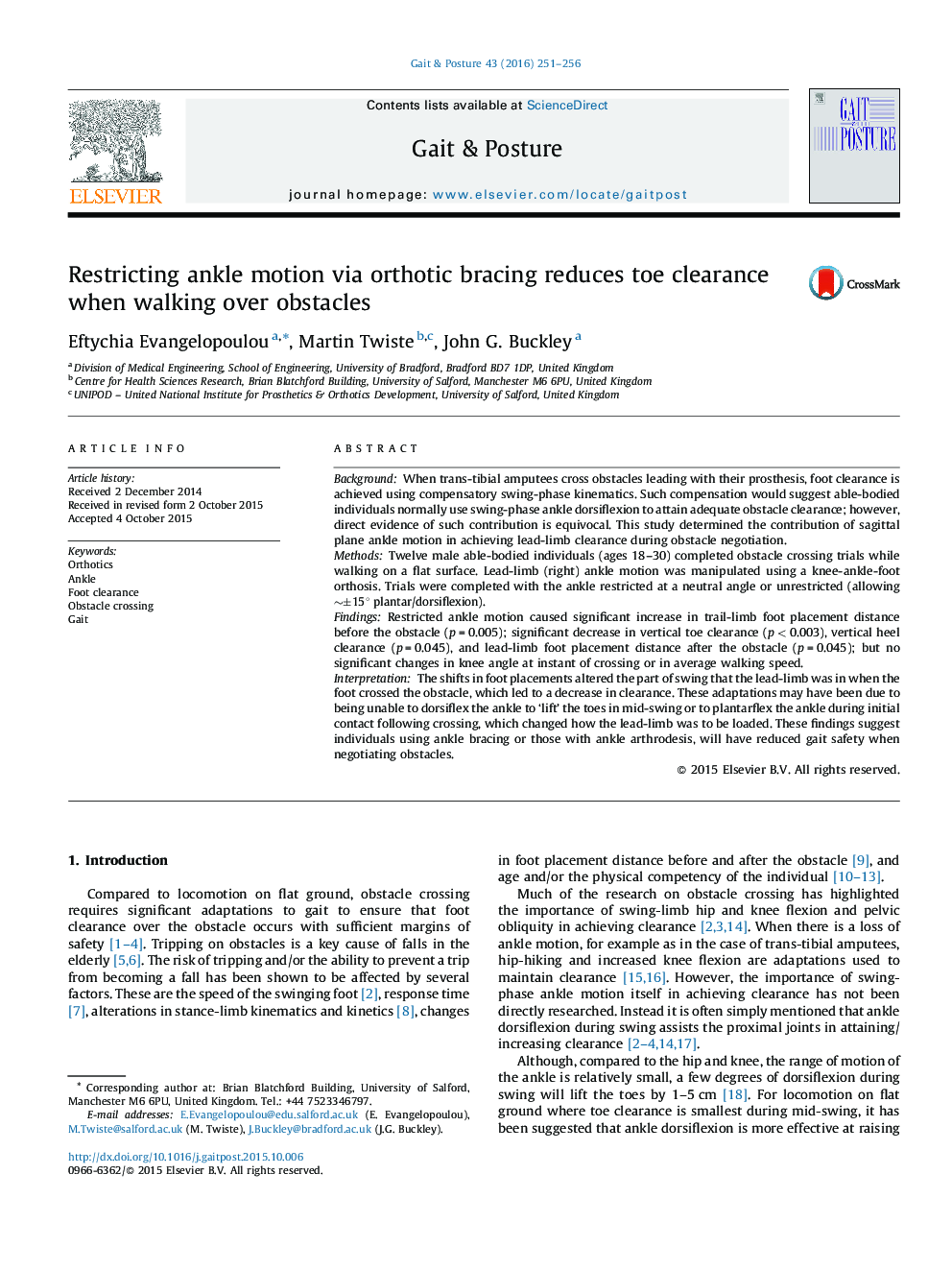| کد مقاله | کد نشریه | سال انتشار | مقاله انگلیسی | نسخه تمام متن |
|---|---|---|---|---|
| 4055859 | 1603852 | 2016 | 6 صفحه PDF | دانلود رایگان |
• We report effects of lead-limb ankle restriction on obstacle crossing.
• Ankle restriction caused a shift in foot placement before and after the obstacle.
• Hence, point of crossing occurred later in swing, which led to reduced clearance.
• Findings highlight that ankle bracing/arthrodesis compromises adaptive gait safety.
BackgroundWhen trans-tibial amputees cross obstacles leading with their prosthesis, foot clearance is achieved using compensatory swing-phase kinematics. Such compensation would suggest able-bodied individuals normally use swing-phase ankle dorsiflexion to attain adequate obstacle clearance; however, direct evidence of such contribution is equivocal. This study determined the contribution of sagittal plane ankle motion in achieving lead-limb clearance during obstacle negotiation.MethodsTwelve male able-bodied individuals (ages 18–30) completed obstacle crossing trials while walking on a flat surface. Lead-limb (right) ankle motion was manipulated using a knee-ankle-foot orthosis. Trials were completed with the ankle restricted at a neutral angle or unrestricted (allowing ∼±15° plantar/dorsiflexion).FindingsRestricted ankle motion caused significant increase in trail-limb foot placement distance before the obstacle (p = 0.005); significant decrease in vertical toe clearance (p < 0.003), vertical heel clearance (p = 0.045), and lead-limb foot placement distance after the obstacle (p = 0.045); but no significant changes in knee angle at instant of crossing or in average walking speed.InterpretationThe shifts in foot placements altered the part of swing that the lead-limb was in when the foot crossed the obstacle, which led to a decrease in clearance. These adaptations may have been due to being unable to dorsiflex the ankle to ‘lift’ the toes in mid-swing or to plantarflex the ankle during initial contact following crossing, which changed how the lead-limb was to be loaded. These findings suggest individuals using ankle bracing or those with ankle arthrodesis, will have reduced gait safety when negotiating obstacles.
Journal: Gait & Posture - Volume 43, January 2016, Pages 251–256
